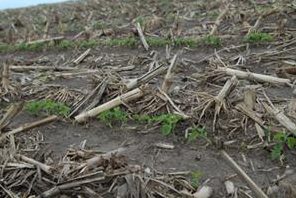Wet Weather Affects Soybean Planting in Nebraska; Farmers to Apply Residual Herbicides

Soybeans in early June in a field near Clay Center, Nebraska
According to a recent AgWeb article, frequent rainfall and wet soil conditions across the state of Nebraska have disrupted early season field operations such as herbicide applications. AgWeb reports many soybean crops in Nebraska have been planted without receiving preplant and/or preemergence herbicides, but that farmers can apply residual herbicides after soybean emergence to maximize soybean yield.
While wet weather across the nation’s midsection has caused delays in soybean planting this year, the USDA estimates that, as of June 2, 81% of soybeans had been planted in Nebraska. However, Amit Jhala, extension weed specialist at the University of Nebraska-Lincoln, says “due to wet soil conditions, many soybean growers were not able to apply residual herbicides prior to soybean emergence.”
To address early season weed control, Jhala reports soybean growers can apply residual herbicides such as Dual II Magnum, FirstRate, Outlook, Prefix, Intrro, Pursuit, Warrant, and Zidua after soybean emergence. “Given most soybeans grown in Nebraska are glyphosate-resident,” Jhala says, “glyphosate (Roundup) can be tank-mixed with residual herbicides such as Dual II Magnum, Warrant, or Zidua (herbicides with no foliar activity) to control weeds already emerged at the time of application. It is also possible to tank-mix some other postemergence herbicides such as Cadet, Classic, Cobra, Flexstar GT, Fusion, Fusilade DX, Phoenix, and Ultra Blazer to control emerged weeds.”
According to Jhala, farmers should take crop stage, tank mix partner, weed height, and carrier options into consideration when addressing weed control with residual herbicides applied after soybean emergence.